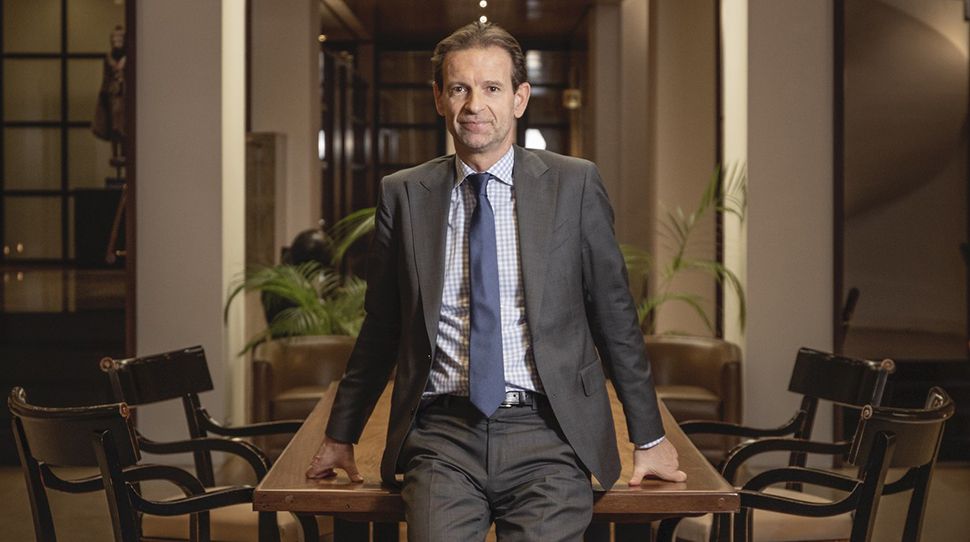Working every day in the interest of our clients and society

The history of the Luxembourg financial marketplace is intimately linked to the history of certain banks. This is the case for the Crédit Agricole group, which is celebrating its 100th year in the Grand Duchy this year. On this occasion, the economic and financial magazine Paperjam met with Olivier Chatain, Senior Country Officer for the Crédit Agricole group in Luxembourg.
In 2020, the Crédit Agricole group is celebrating 100 years in Luxembourg. How do you feel about this anniversary?
The development of the first banks in the country’s banking history was based on international capital. La Luxembourgeoise was the first truly national bank and the first native insurance company. It’s a real source of pride to be able to trace back our roots to this unique history. We have contributed to the establishing and development of the Luxembourg financial marketplace as we know it today, which gives us a particular legitimacy and status.
The history of the financial marketplace is intertwined with the history of the Crédit Agricole group. What key dates come to mind that conjure up these common destinies?
Our role in the creation of the Luxembourg Stock Exchange, in which we are still shareholders, of course springs to mind. We are also founding members of the Association des Banques et Banquiers de Luxembourg or ABBL (Association of Luxembourg Banks and Bankers) and the Association Luxembourgeoise des Fonds d’Investissement or ALFI (Luxembourg Association of Investment Funds), which are highly representative embodiments of the financial marketplace’s ecosystem. Aside from these examples, we have been – and still are – a significant player in the development of the fund, wealth management, asset management and insurance industry.
Since 2018, we have been assisting start-ups with their development, through the Hub@Luxembourg installed in the House of Startups, with an openness to the outside world specific to the Grand Duchy’s ecosystem and thanks to the support of Crédit Agricole’s network of accelerators; a network that is the main factor differentiating the Hub@Luxembourg from the Grand Duchy’s other players.
We have an ongoing policy of attentiveness and helping to ensure the rude health of the region that we are operating in.
Crédit Agricole is a major player in Luxembourg, but its presence seems discrete. Can we explore this point?
The Crédit Agricole group operates in Luxembourg through seven sector-leading businesses: Amundi, CACEIS, CAMCA, CALI Europe, Fund Channel, the Hub@Luxembourg and Indosuez Wealth Management. The synergy of all these businesses is our strength and means that we can offer our diverse expertise to every client. Also note the creation in 2008 of the Crédit Agricole Grameen Foundation, which is engaged in the global fight against poverty.
The celebration of our centenary in Luxembourg is just the opportunity to position and express ourselves as a “group”, and to showcase our universal nature, which makes us unique.
“Working every day in the interest of our clients and society”
What values drive today’s Crédit Agricole group in Luxembourg, internally and in its dealings with your clients?
Our fundamental purpose is upheld by three pillars: our client project, our human project and our societal project. This is expressed as: “Working every day in the interest of our clients and society”.
These days, to operate in our business, holding a banking license and regulatory approval is not enough; you need to demonstrate that you are useful to the society that we live in.
These values, which define us and have always guided our actions, also happen to be more relevant than ever.
Today’s banking bears little resemblance to yesterday’s banking. How do you think tomorrow’s Crédit Agricole will look?
Making predictions is always risky. I have been in Luxembourg for ten years, and I get the impression that things have never stopped changing in my line of business during these ten years.
But I can assure you that the Crédit Agricole group will always be present, in an environment that is surely very different, and probably still more challenging. This will of course involve new technologies – and we are well prepared for this – but digital technology will not replace the human touch; quite the contrary. Our activity will be both completely human and completely digital. For us, these two aspects are not at odds with each other, but go hand in hand.
Read interview here (Paperjam, Crédit Agricole group, 02/03/2020)
March 03, 2020




